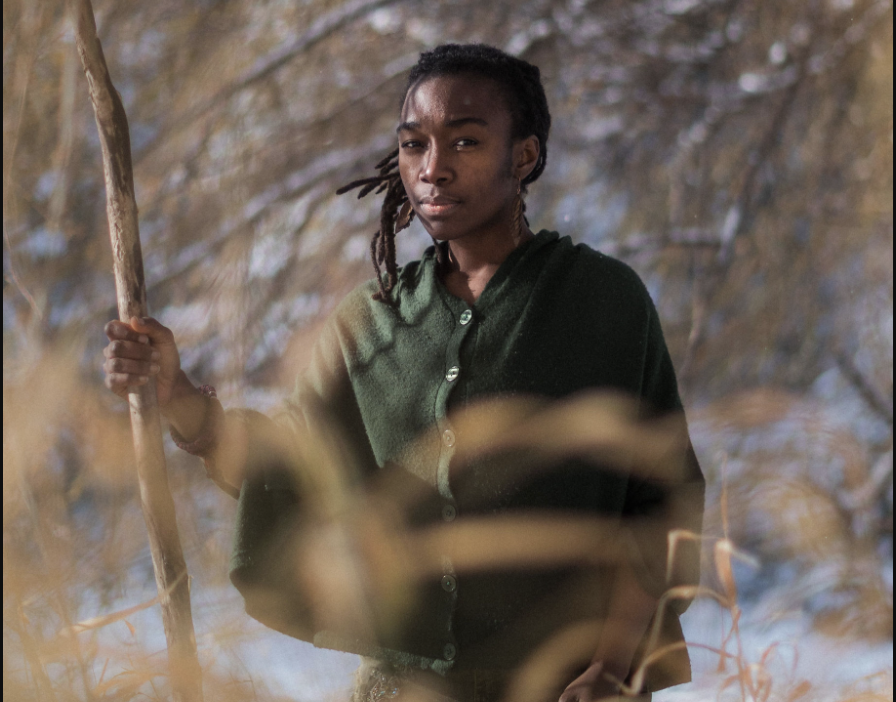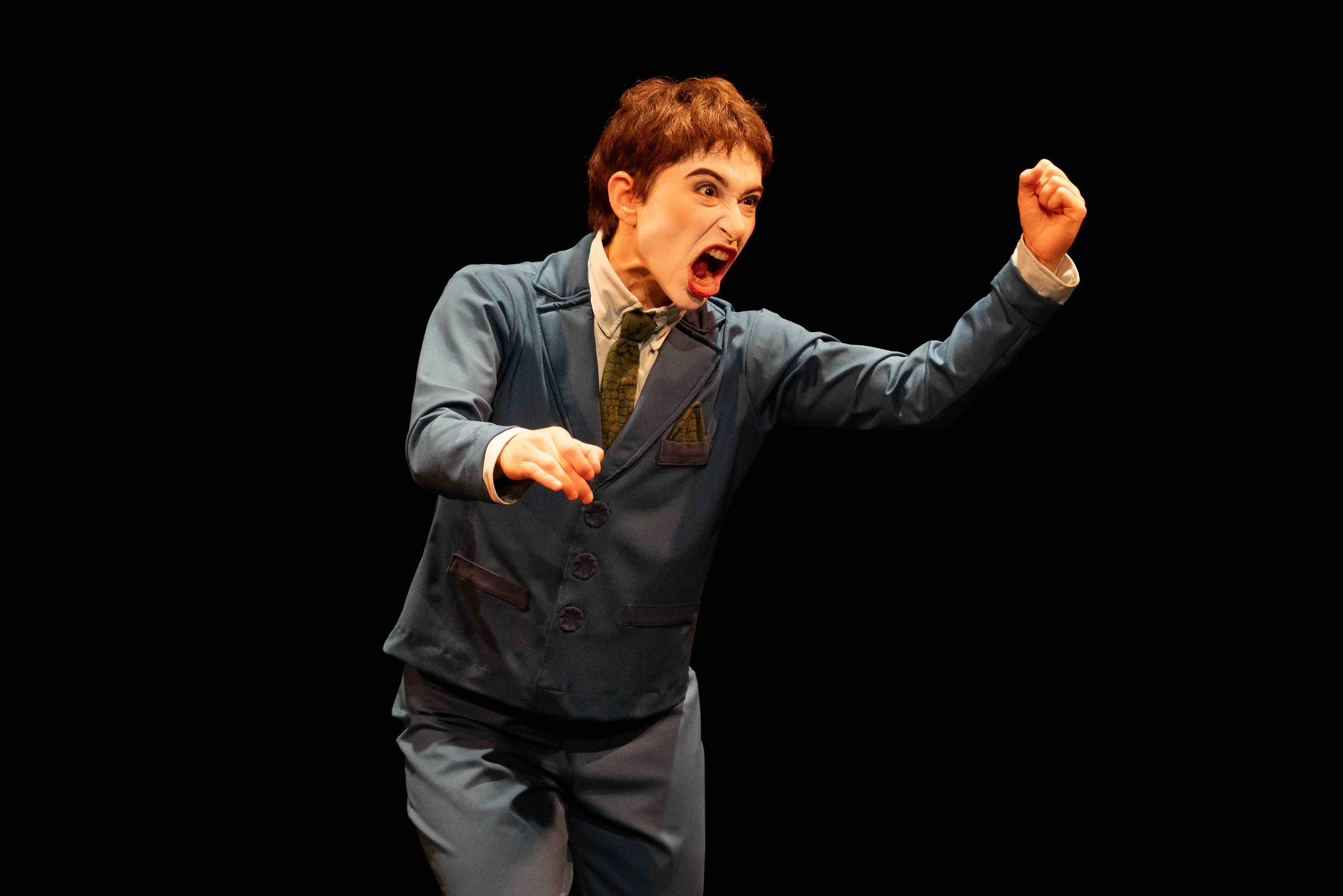Black & Rural gives a glimpse into the lives of Black Canadians who call the countryside home
Storyteller Shayna Jones shares insights drawn from interviews with people of African ancestry who live outside of urban centres
Shayna Jones, Black & Rural. Photo by Louis Bockner
Pacific Theatre Presents Black & Rural, a Pi Theatre guest production, from March 31 to April 15
FOR OVER SEVEN years, performance artist Shayna Jones has lived just outside of the Village of Kaslo in the West Kootenays. It’s a beautiful place surrounded by the Purcell and Selkirk mountain ranges and one where Jones, a Black oral storyteller of African and Afro-diasporic folklore, feels at peace. It’s also a community that is largely white. Jones, whose artistic company is called we are STORYFOLK, recalls being struck by the Black Lives Matter rally that took place there following the murder of George Floyd in 2020.
“For me, it created major inner dissonance,” Jones says in a phone interview with Stir. “It was one at once, ‘How amazing, how incredible, that this little rural mountain village of 800 people, a mostly white community, was rallying together; I can count the number of Black folks on one hand and still have fingers left over. It was amazing that this place I love was gathering together for this cause. And yet it was extremely inwardly exposing—there was this sense of exposure to stand there, to be there as one of the only Black faces, when Blackness was being talked about and celebrated or highlighted. The dissonance created in me was between wanting to be proud and supportive and then also wanting to be nowhere near it.
“That is the episode that fuelled this quest in me to reach out and hear from other Black folks tucked away in rural settings,” she says. “Are they out there? Why? What keeps them there? What draws them there?”
Those questions led to the formation of Black & Rural, Jones’s nationwide, multiplatform artistic inquiry into the minds, hearts, and souls of people of African ancestry living in the Canadian countryside.
Jones has interviewed people all across the country for the ongoing living heritage project, asking them questions like: Why do you choose to live rurally? Are you attracted to the idea of living in a Black community? How does the proximity to the wilderness influence your connection to your roots? What does it mean to you to be Black and rural?
The answers can be found on the Black & Rural website, along with photos of interview subjects from places like Lacombe, Alberta; Winlaw, B.C.; unnamed towns in Saskatchewan and Ontario; and beyond. The initiative invites people to share their stories, snapshots, poems, photographs, videos, essays, and other modes of expression about their reasoning for and experiences living far removed from urban centres. The site serves as a digital gallery of the insights collected.
Those reflections also form the basis of Black & Rural, a theatrical performance directed by Pi Theatre’s Richard Wolfe that is about to have its world premiere in Vancouver. In it, Jones weaves in actual voices drawn from her interviews along with folkloric storytelling devices, including symbols and archetypes, to share people’s experiences while protecting individuals’ privacy.
The conversations Jones has had with African-descent rural Canadians have proven incredibly moving, she says. Many have ended in tears—“mainly because of having an opportunity to speak to an experience to someone who is also living it themselves” and “the sense of being heard by one another”, she says. “Also what came up was this sense of being so highly exposed, so highly visible, and this sense of being seen and being unseen, being caught up in navigating the assumptions, especially connected to popular culture, about Blackness: What blackness is and where Blackness belongs and navigating that in rural, often small, white settings. There are themes of…having to perform a certain mode of what people expect you ought to be; and of some people fleeing to the wilds of a rural setting, to the mountains, people wanting to live in that context to be free of the stories and narratives that are put on them as being a Black person. But then there are also other souls relating to the danger in fleeing and having no one to witness what happens to you when out in those settings and that being a part of what has kept Black bodies away. So there’s just the depth of so many of the conversations.”
Shayna Jones, Black & Rural. Photo by Louis Bockner
Jones says she’s honoured to be a source of representation to Black people who may feel bound in urban settings or drawn to live somewhere other than where they are but don’t have any examples to turn to or have not “heard of Black individuals living in other settings counter to the popular narrative, the scripted existence”, Jones says. “I’m grateful to bring to light something else, the full spectrum of Black existence.
“This piece is also about listening and seeing one another deeply and not allowing ourselves to be boxed into any one script or narrative,” she adds. “And I want to be a part of having anybody of any race or creed witness that kind of story, no matter who they are or where they live. That’s my quiet little hope.”
As for how Jones ended up living just outside of Kaslo, it’s a long story. She will say, however, that she truly feels at home. “I’ve discovered that living close to the land, living among the trees, living where the natural world overwhelms the human-constructed world: that is where I find my life and my stability and my healing and my desire to keep checking on the Earth,” she says. “It’s a place of healing for me.”














